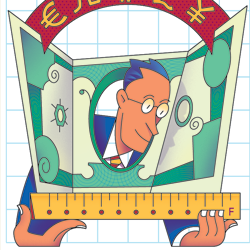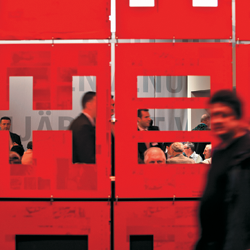 You've asked a crucial question. Too many of us chase urban myths and hope for the best, or buy a Greener booth and forget about everything that goes into using it.
You've asked a crucial question. Too many of us chase urban myths and hope for the best, or buy a Greener booth and forget about everything that goes into using it.
We need to look beyond the booth. In fact, certifications, such as ISO 14001, force you to assess a wide range of impacts before deciding where your biggest problems and opportunities lie.
Let's do the numbers
Last December, EXHIBITOR magazine published an in-depth description of Heidelberg Druckmaschinen AG's presence at Drupa 2012. Heidelberg measured its carbon footprint in order to offset its greenhouse gas (GHG) emissions, and the numbers are revealing:
- 107.2 tons – Shipping and logistics of all major items to the show
- 115.6 tons – Planning, including business travel and office work
- 118.7 tons – Garbage sorting and removal during and after the show
- 517.3 tons – Exhibit operations for demos, materials used, miscellaneous
- 699.9 tons – Suppliers of food, security, cleaning, other services
- 2,575.4 tons – Transportation and accommodation of staff and guests
- 4,340.8 tons
Held once every four years, Drupa is an enormous undertaking. Heidelberg's "booth" in 2012 was slightly larger than a soccer field. The show lasted 14 days and the on-site build-up went on for a full month. This is a far cry from the three-day installs and three-day shows that U.S. exhibitors manage.
So the numbers skew heavily toward travel, accommodations, and contractor operations on-site. How could it be otherwise, with so many people working with so much equipment week after week?
The tale of the tape
Would you expect to see a similar breakdown at a U.S. show? We recently ran the numbers to find out.
We chose an exhibitor that has been using a custom, wood construction 10-by-30-foot booth at three shows per year for the past eight years. Based on the best available data, construction created roughly 36,000 pounds (18 tons) of GHGs.
The booth travels a three-show circuit each year, leaving from an exhibit house in Southern California to shows in Anaheim, Chicago, and Baltimore. The booth is stored in the exhibitor's warehouses along the way. As a result, the booth only returns to the exhibit house once a year.
The company flies about 15 employees to each show, primarily from their headquarters in the Southeast. Two-thirds of them fly coach and the others ride up front, which matters if you calculate airline carbon emissions on a per-seat basis.
We ran the GHG numbers, then divided by the number of shows in order to look at an average event:
- 1,500 pounds – Booth construction amortized over 24 shows
- 3,500 pounds – Shipping for one-third of the three-show circuit
- 9,500 pounds – Air travel for one-third of the three-show schedule
- 14,500 pounds
The breakdown is strikingly similar to Heidelberg's. Unfortunately, we don't have reliable numbers for on-site accommodations, local transportation, or supplier operations. But if we did, they would skew the carbon footprint even more heavily toward show-site activities and away from booth construction.
Even in this modest, fairly typical show program, travel, shipping, and on-site operations dwarf the environmental impact of booth construction. If the exhibitor continues to use this booth in the future, amortized construction will become an ever-smaller portion of the program's total environmental impact.
Back to you in the booth
Does this mean buying a Greener booth is pointless? Absolutely not! This 10-by-30-foot booth still generated eighteen tons of greenhouse gas emissions.
Imagine what would happen if the exhibitor discarded it after two years, as some companies do. On a per-show basis, construction emissions would jump to from 1,500 to 6,000 pounds.
On the other hand, if this 300-square-foot booth had been built of aluminum struts and stretched fabric instead of plywood, nearly two-thirds of construction GHGs could have been avoided. The shipping footprint would have followed suit, yielding a 25-percent overall reduction in per show emissions.
That's big. These are real numbers and they deserve your consideration. But they also point out the importance of measuring much more than the booth.
Shoot silver buckshot, not a silver bullet The lesson here is that there is no single Green fix. That's why Greening your overall show program, not just your booth, is so important. This doesn't mean your design and construction choices don't matter. They certainly do. But looking at the bigger picture can reveal many other, potentially much bigger opportunities to go Green too.




 My company wants a Green booth. Is that the best thing to buy, or should we put our money elsewhere?
My company wants a Green booth. Is that the best thing to buy, or should we put our money elsewhere?  You've asked a crucial question. Too many of us chase urban myths and hope for the best, or buy a Greener booth and forget about everything that goes into using it.
You've asked a crucial question. Too many of us chase urban myths and hope for the best, or buy a Greener booth and forget about everything that goes into using it.


